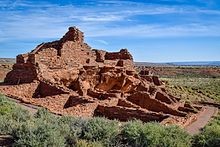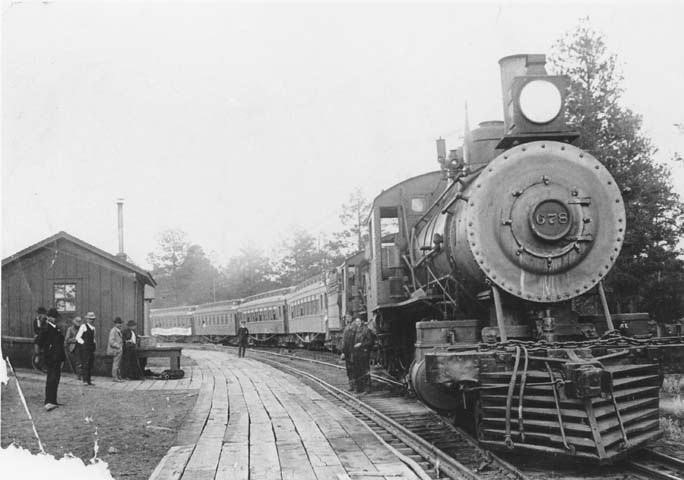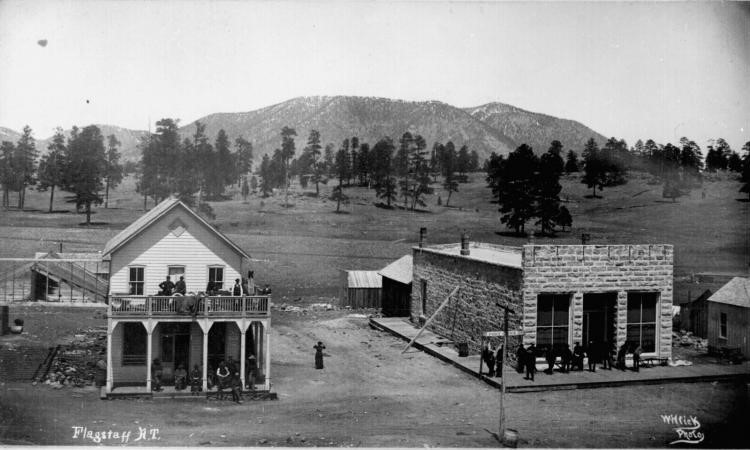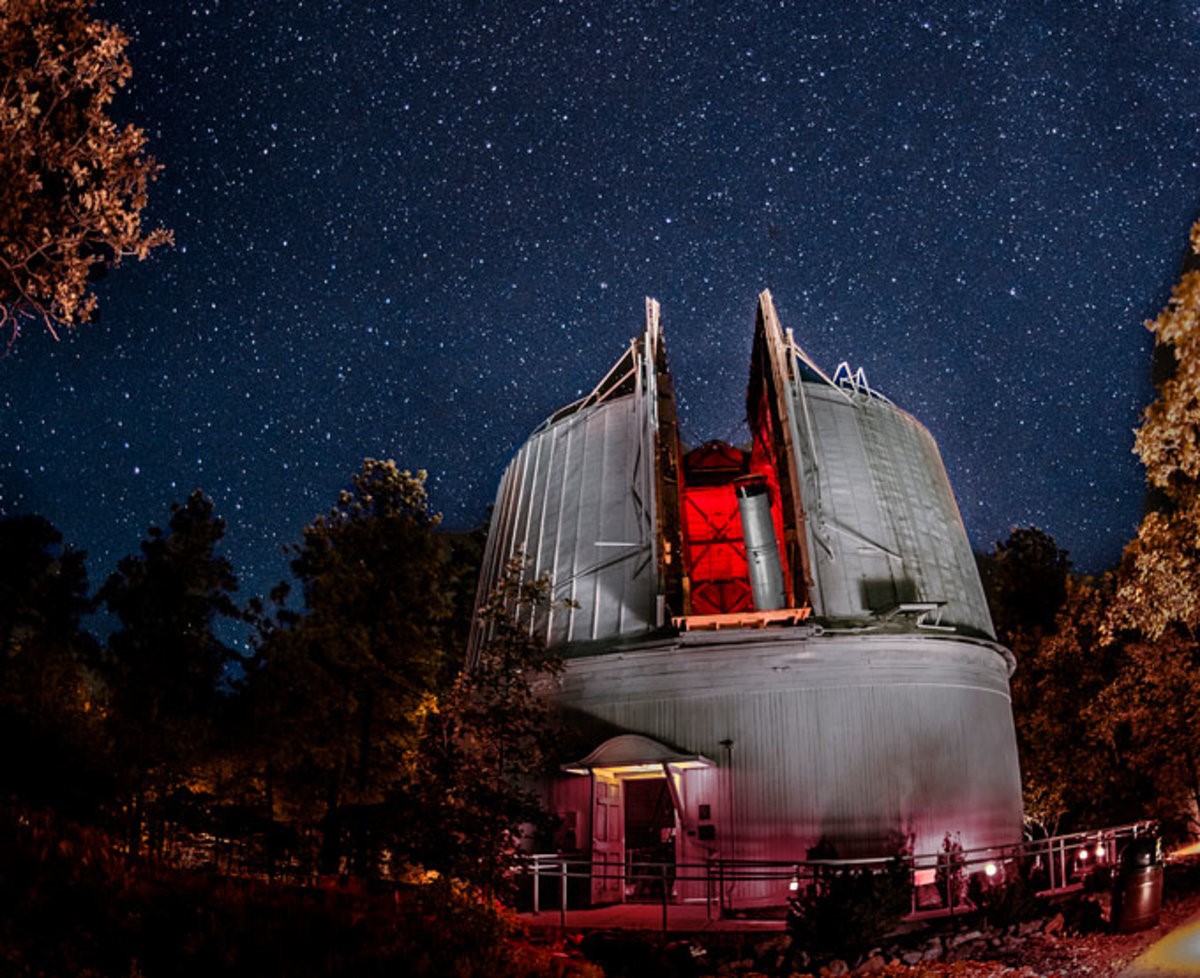Realty Executives of Flagstaff
Rising interest rates and previously skyrocketing home values have put many homes out of reach for buyers in all price ranges.
But there are ways to soften the effect of what a mortgage may cost.
Be decisive
Moving quickly when you are able to do so may be your best strategy. If you find that perfect property, get it. Many buyers have lost their buying power since the beginning of the year with interest rates almost double. So, it may be more beneficial to act quickly to beat losing out or being priced out of that perfect property.
Explore an adjustable-rate mortgage
If you plan on living in your next home for fewer than 5 to 7 years, it pays to speak to your lender about a 5/6 or 7/6 ARM or adjustable rate mortgage. For a far superior interest rate, you will get a loan that does not rate-adjust for 5 to 7 years, adjusts every six months afterward, and you could sell it or refinance before that ever occurs.
Lock it down
Interest rates fluctuate weekly; sometimes daily. Speak to your mortgage adviser about when to lock that interest rate, how long you get to keep that rate and whether you should pay for a longer rate lock.
Pay cash
That sounds like a very flip thing to say, but cash is starting to become king again. Money has been so cheap over the past few years that it made sense to get a loan even if you were able to pay cash for a property. In many markets, however, cash has been used by up to 27% of buyers to win a deal and then refinanced after close of escrow. Cash was great for that; it may be great again to sweeten the pot for a seller who may be caught off guard by current market conditions and is ready to make a deal.
Make an offer
With changing market conditions, many home sellers don’t know what the market value of their home is and are waiting for an offer. A seller’s situation may have changed, and they may be willing to accept less than asking price. You may come to an agreement on your terms. As the old saying goes: “They can’t say ‘Yes’ unless you ask the question.”
About the Author:
Gary Nelson
2022 President, Arizona Realtors
Delegated Associate Broker
Realty Executives of Flagstaff
https://www.garynelsongroup.com/
928-600-4279
Early Beginnings
The Sinagua people occupied a large area surrounding Flagstaff between about 500 CE and 1425 CE. These peoples then left the area due to unknown factors. These factors may have included: the eruption of Sunset Crater, resource depletion, drought, and/or clashes with newly arrived Yavapai people. There were also Northern Tonto Apache tribes in the area. A US Army Corps of Engineers book notes that Flagstaff did not have a colonial Spanish presence. There were Spanish missionaries nearby however, as indicated by the naming of the San Francisco peaks in the 17th century.
 |
Arizona separated from Mexico in 1848 and became American territory, and Flagstaff was created about 10 years later. It began when Edward Beale was appointed by the U.S. Congress to build a road across North America. Using camels along with horses and donkeys to carry supplies on his journey, he sent back glowing reports of the Flagstaff area. Our grasslands, timber, and water were attractive, but its isolation discouraged immediate growth.
On July 4, 1876 a small group of emigrants from Boston camped at a small spring with the peaks looming overhead. In honor of the nation’s centennial, they stripped a pine tree of its branches and bark and raised an American flag. When they moved on, future travelers used this post as a landmark.
The Railroad Arrives
In 1880, the Atlantic and Pacific Railroad began to lay track between California and Albuquerque. Merchants and saloonkeepers set up supply camps along the railroad for advance parties of workers. In 1881 these citizens called the little town Flagstaff, in honor of the landmark. By that fall, population was at 200, and was becoming a railroad town filled with dance halls, gambling houses, and saloons. When the railroad was completed, some of these citizens moved on, but for those that stayed, Flagstaff became home for various sheep and cattle ranchers, lumber mills, merchants, cafes, hotels and saloons.
 |
 |
Beale’s trail was replaced with cross-country railroads and highways, including Route 66. The proximity of Flagstaff to the Grand Canyon brought an economic boost and expanded tourism, even during the Great Depression.
Pluto is Discovered
 |
 |
In 1894, Massachusetts astronomer Percival Lowell had the area scouted for a site to build a new observatory. The Lowell Observatory was then built on Mars Hill, overlooking the town. In 1930, Pluto was discovered from the Observatory, and was named in part for Percival Lowell (PL). In the 1960s, during the Apollo program, the Clark Telescope at Lowell was used by the United States Geological Survey to map the moon for lunar expeditions.
In 1894, Massachusetts astronomer Percival Lowell had the area scouted for a site to build a new observatory. The Lowell Observatory was then built on Mars Hill, overlooking the town. In 1930, Pluto was discovered from the Observatory, and was named in part for Percival Lowell (PL). In the 1960s, during the Apollo program, the Clark Telescope at Lowell was used by the United States Geological Survey to map the moon for lunar expeditions.
Today's Flagstaff
The Northern Arizona Normal School was established in 1899, and was renamed Northern Arizona University in 1966.
Flagstaff saw its first tourist boom in the early years of the 1900s, and was known as the City of Seven Wonders. These seven wonders were the Coconino National Forest, Grand Canyon, Oak Creek Canyon, San Francisco Peaks, Sunset Crater, Walnut Canyon, and Wupatki National Monument.
As the town grew, the infrastructure of the downtown remained the same, stunting economic growth. Many businesses started to move out of the area. Then in the 1990s, the city drafted a new master plan which revitalized the downtown area, and had a focus on preservation. With the construction of a city hall, library, and city administrative building, downtown became more cultural again. Store owners took advantage of the historical appeal. Original sandstone buildings were restored and neighborhoods became registered as historic districts.
With the Flagstaff Pulliam Airport running more and more flights, commuting and tourism was expanded. Microbreweries and craft restaurants opened downtown. In 2001 Flagstaff was recognized by the International Dark-Sky Association as the world’s first “International Dark-Sky City”, followed in 2012 by its official title of “America’s First STEM Community”. Olympic athletes began coming to Flagstaff for altitude training. The HYPO2 center in the city trained over 85 Olympic medalists from 44 countries between 2012 and 2019.
Today you’ll find Flagstaff packed with well-kept trails and forests, which provides a backdrop for a wide variety of outdoor sports and activities. Downtown Flagstaff boasts many amenities including microbreweries, locally-owned restaurants, and year-round festivals and events. All of these make Flagstaff a vibrant and highly desirable place to live.
Imagine you meet someone new and, during the conversation, you ask what they do for a living. They answer, “I’m a plumber.” Chances are, you immediately conjure an image of them installing pipes or fixing leaks.
But, you also know they probably do much more.
A similar thing happens to us occasionally. Someone will ask what we do, and we tell them we are real estate agents. They then immediately assume we help people buy and sell homes.
And, of course, that’s true! But, we actually do much more for our clients.
For example, we are there for clients when they have questions or need advice, even during the years between moves.
We are also available to clients when they need a recommendation. For example, if you’re looking for a good contractor for an upgrade you’re planning for your home, we can probably give you a name.
And, we also keep my clients informed with valuable market updates, tips, and how-to articles. (That’s why we send you this e-Newsletter each month.)
The bottom line is, We are there for you throughout the homeownership journey, helping ensure you’re always in a property that matches your lifestyle and goals.
Update to Flagstaff Home Sales
 |
Though an added note to this, if we compare this year's home sales to 2019, we're only selling -2% fewer homes, and possibly back to a more normalized homes sales trend. |
 |
Until recently, the reason for this was lack of available inventory. For example, early in 2022 we only had 41 homes on the market and at that time we should have seen 400-500 homes. Today that number has climbed to just under 300 homes in the general Flagstaff area, a huge jump. |
|
With inventory increasing one might think that home values would start to decline but the median home price in Flagstaff's active inventory is $725,900. The median price of homes sold this year-to-date is $650,000, up 25.6%. Homes on the market are 11% higher than the median for the year. Couple the higher home price with the interest rates that are hovering at 5.5% or so, that means that a mortgage payment could be as much as $600-$700 more a month. |
 |
Another interesting fact is that increase in home prices have slowed down as we progress into the year. The month of January, home prices rose 29.2%, while June the increase dropped to 17.3% and July month-to-date they are up at 2.5%.
We have attached a chart that breaks down sales through July 19th by home type, along with a final chart at the bottom showing home sales of all types by price range. You will see that homes sales have shifted from under $700,000 to over $700,000.
This is a very fast changing market. If you have questions, please never hesitate to reach out to Renee or Jeff with any questions.

 |
Renee Gaun * Jeff Ross 928-606-6232 Renee
|
15 E. Cherry Ave |
Flagstaff Historic Downtown Walking Guide
Welcome to Historic Downtown Flagstaff!
Few Arizona cities boast a classic downtown as rich and vibrant as this one. The history of Flagstaff began in earnest ahead of the arrival of the Atlantic and Pacific Railroad on Aug. 1, 1882. It quickly became the most populous stop on the railroad between Albuquerque and the California Coast. Flagstaff also catered to train passengers as part of its expansion of downtown commerce. Route 66 shifted the economics and brought a steep rise in tourism by automobile, particularly after World War II. A major makeover through the 1990s helped invigorate energy into these city blocks, with a focus on preservation. The restoration of the Babbitt Building, Hotel Weatherford and the development of Heritage Square joined other efforts in fortifying the town’s character. Thanks in large part to those endeavors, visitors can enjoy a historic walk along the storied streets of Flagstaff.
As a stop on the transcontinental Santa Fe Railroad, the train station once held its place as one of the most important buildings in downtown Flagstaff. Today, the main depot still operates as an Amtrak station. However, the station finds most of its bustle with the Flagstaff Visitors Center, which provides information and advice to tens of thousands of travelers each year. The building was first constructed in 1926 to replace the depot located one block east. Architecturally, the station stands as an example of the Tudor Revival style. Features include timbering in the exterior walls, large chimneys, high-pitched roofing and cross-gables. In the early 1990s, the city purchased the property from the railway for $480,000 and transformed the west end of the building into the Visitors Center. Inside the Center, a model railroad provides people of all ages a chance to appreciate locomotives and Flagstaff’s historic downtown on a smaller scale. The model captures how town would have looked from the railway in the 1920s. This includes the McMillan Building, the next stop on this tour. While leaving the Visitors Center, take time to visit the giant, wooden logging wheels near the rail line and notice the shield that recognizes Historic Route 66 in the Visitors Center lot. And before crossing Route 66 to the next stop on the tour, note the sign for the Route 66 Trail—one of the city’s first major urban trails and one cornerstone of its extensive Flagstaff Urban Trail System.
The building known as the McMillan first gained prominence in Flagstaff as the Bank Hotel. Construction of a bank building began here in 1886, but-ironically-the bank ran short of funds to complete the project. Thomas McMillan, who became one of Flagstaff’s earliest ranchers after seeking gold in California and raising sheep in Australia, took over the project and finished the building. McMillan also is connected to the town’s namesake. At a spring used by his sheep camp is where a “flag staff” was raised to celebrate the American centennial in 1876. One of the building tenants became the aptly named Bank Hotel. The building also offered commercial space for the Arizona Central Bank and later Wells Fargo. It became a hub for social events during the late 1800s, with the McMillan Opera House on the ground floor. The Bank Hotel building has remained a prominent part of the historic downtown streetscape.
The highly influential John W. Weatherford arrived to Flagstaff in 1886 and purchased lots on Gold Avenue (later renamed Leroux Street), with money from selling his horse and buggy. He operated several businesses, including the Parlor Saloon, a livery stable that rented horses and buggies and a furniture store. He ultimately transformed his corner property into a hotel that opened on January 1, 1900. It gained a strong regional reputation across the Southwest. Its other competitors downtown at the time were the Bank Hotel and the 34-room Commerce, which was across from the train station near present-day Flagstaff Brewing Company. Up through World War II, inns such as the Weatherford were often known as railroad hotels for their proximity to depot to cater to train passengers. Famous guests at the Weatherford included newspaper mogul William Randolph Hearst, President Theodore Roosevelt and Western novelist Zane Grey-whose name adorns the hotel’s upstairs bar and ballroom. The story of the Weatherford is not complete without highlighting the efforts of Sam Green and Henry Taylor, who have worked tirelessly to restore the historic hotel. It still hosts overnight guests and features three bars and a restaurant. The Weatherford, its own founding on New Year’s Day, has hosted a “Pinecone Drop” to celebrate the New Year since 2000 (also the 100th anniversary of the hotel). Visitors around the holidays will catch a glimpse of the countdown clock and large metal pinecone poised for the lowering on New Year’s Eve.
The Orpheum Theater stands as another John Weatherford venture. In 1911, following an ill-fated and short-lived egg ranch, Weatherford reimagined this lot into what became the Majestic Opera House. It featured a stage, movie screen and hardwood dance floor. Only a few hours after New Year’s Eve partiers left the Majestic on the first day of 1915, the opera house collapsed under more than five feet of snow. Weatherford reportedly paid a boy to crawl in and pull the movie projector from the wreckage. The entrepreneur set up a temporary theater dubbed “The Empress” in a garage previously owned by the Babbitt family (see next stop). Two years later, in 1917, Weatherford opened a new theater at the site of the destroyed one. He christened it the Orpheum. It was much larger and grander than the Majestic. Even during the Great Depression, upgrades came to the theater in the form of a 1937 renovation. The local paper, the Coconino Sun, said it stood as one of the “most modern and attractive show-houses in the entire state.” The theater remained an entertainment venue for decades to follow, until it shuttered in 1999. Three years later, the theater was again reborn by a group of local businessmen. The Orpheum continues to host concerts, films, events, and community gatherings. Visitors should take their time to view The Sound of Flight mural by artists Sky Black and the Mural Mice—commissioned in 2015 in tribute to the arts at the Orpheum and throughout Flagstaff—on the eastern wall of the building.
The Babbitt Brothers are one of the most prominent historical families in Flagstaff. These five siblings arrived in 1886 from Cincinnati to establish a cattle company and mercantile and trade businesses. In 1888, brother David constructed the Moenkopi Sandstone building on the northwest corner of Aspen Avenue and San Francisco Street. It was Flagstaff’s first two-story structure. The design includes features of the Italianate style popular in the Victorian Era. The Babbitts operated their department store in the building through 1987. In the 1990s, the business district saw major transformations as part of a streetscape project—and the Babbitt Building became the site of one of the early restorations. The family name remains with the current store, with Babbitt’s Backcountry Outfitters. On the south wall of the building, visitors can see the original signage for “Babbitt Brother Ranchers, Merchants & Indian Traders, Flagstaff Arizona.”
Meaning “mountain view” in Spanish, the Hotel Monte Vista represented a next phase in downtown development and travel accommodations. The prosperity and progress of the 1920s led to a campaign to build a new-era, 73-room downtown hotel. City leaders organized the Flagstaff Community Hotel Corporation and raised $200,000 in a stock-selling campaign. It finished ahead of the original schedule and under budget. A “name the hotel contest” capped off the proceedings, and the property opened in Jan. 1, 1927. Along with the hotel, it featured an infamous speakeasy during Prohibition. The hotel remained a publicly held property until the 1960s, when it was sold to private investors. Today, the Hotel Monte Vista still greets overnight guests, and features the Monte Vista Lounge and Rendezvous Coffee House & Martini Bar. The Monte Vista also has some notoriety for its hauntings, from the mysterious “Phantom Bellboy” to the “Elevator Attendant,” along with suspicious knockings and moving rocking chairs in Room 305 (Visitors can learn more about the specters throughout historic downtown with the self-guided Flagstaff Haunted Walking Tour). Famous guests to the Monte Vista include Bob Hope, Jane Russell, John Wayne, Bing Crosby, Clark Gable, Humphrey Bogart, Gary Cooper and Debbie Reynolds, among others. The towering Hotel Monte Vista neon sign remains an iconic feature of downtown Flagstaff’s horizon.
In 1881, as the railroad neared Flagstaff, a settlement cropped up east of present-day downtown to provide supplies and entertainment for the men of the railroad. One of the first entrepreneurs Peter Brannen, from Ottawa, Canada and nephew of a successful merchant in Prescott opened up a general store in a tent and dugouts on the slopes of Mars Hill, near a water source called Antelope Spring. Shortly after the streets were laid out for present-day Historic Downtown, Brannen purchased the northeast corner lot of San Francisco Street and present-day Route 66. He paid $25 for the lot and spend $10,000 on the stone building he had constructed in 1883, which makes it the oldest building downtown. His cousin, Dr. Dennis Brannen, established his practice in a building directly east. A saloon followed on the northwest corner of the intersection. What has become the established historic downtown was known then as New town, while the development near Antelope Spring became Old Town. According to one account, Brannen had an “elegantly appointed store, featuring clothing of domestic and foreign manufacture, as well as Studebaker wagons, carriages, buckboards and implements.” Brannen would be hit by hard times in 1895. He moved to California, where he found success selling hardware. By 1900, the Brannen building became home to a corner drug store run by W.H. Timerhoff. The store included a newsstand and soda fountain. It was known for its oddities in the window displays including a live Gila monster. The lizard was once offered a live mouse as a meal (and locals gathered to watch the spectacle), but the mouse scratched at the Gila monster in a way he apparently liked. He never ate him.
Arriving full circle back to the railroad on this historic walk, here is the 1889 Depot. It served as the location for people arriving and leaving in Flagstaff via train for around 27 years. The railroad initially kept three boxcars as a depot not far from this spot, and later replaced it with a wooden building. That structure was lost in the February 1886 fire that burned down most of New Town. The Atlantic and Pacific Railroad later established this stone building to welcome disembarking passengers. Much like the Babbitt Building, the colorful Moenkopi Sandstone was utilized in this simple, one-story construction. Today, it serves as offices for the Burlington Northern Santa Fe Railway. A short walking distance east of the depot, the train engine Two Spot is also kept as a reminder of Flagstaff’s past. It’s a Baldwin 2-5-0 locomotive that gained its nickname from the water bags that hung below its engineer windows. The bags steadily wore off the paint leaving a spot where the 5 was next to the 2. The Arizona Lumber and Timber Company bought the locomotive in 1917, and it remained in Flagstaff its entire working life. When returning to the Visitors Center to complete the route, consider the role of the railroad in this important hub city of the American Southwest and how it led to early establishment of this mountain town.
Written by Seth Muller
DiscoverFlagstaff.com
One E. Route 66, Flagstaff, AZ 86001
800.842.7293 * 928.213.2951
City of 7 Wonders
Flagstaff, AZ is a great place to live and a fantastic place to raise a family. The small town atmosphere welcomes locals and tourists alike. The downtown area is always bustling with events both large and small. Throughout this region there are artifacts and remains from Native Americans which remind us of the local culture. We are surrounded by breath-taking natural beauty full of pine forests, mountains and the like. You never run out of things to do here in Northern Arizona. It’s no surprise that it is referred to as the City of 7 Wonders. Just what are the “7 wonders” of Flagstaff you ask? Let me take just a moment and satisfy your curiosity.
The first place that over five million people flock to each year is the Grand Canyon. This is one of the most popular tourist destinations in the United States. Carved out from the Colorado River the Grand Canyon offers many outdoor activities including camping, hiking, river rafting and backpacking to name just a few. Families with young children on up to seniors and those with disabilities are able to enjoy the area from early Spring through late Fall. For viewing either the South or North rim, the highways bring you through Flagstaff where many local companies offer tours by bus, air, or river.
There is also the amazing Coconino National Forest which is the largest contiguous pine forest in the World! Yes, you read that right! Almost every outdoor recreation you can think of can be done right here. Many come to hike, go horseback riding, enjoy fishing or to take in the scenery during an afternoon picnic. Many beautiful photo opportunities abound amongst the pines, so don’t forget your camera!
Oak Creek has made it to this list because of the unique rock formations made from eroding sandstone, and even some limestone, that dates back millions of years. You will also be in awe at the series of basalt lava flows that have made the east rim of this canyon. Oak Creek itself excites even the local fishermen as they reel in a few different types of trout, bass and catfish. This is the second most-popular tourist destination in the state of Arizona.
One last canyon to add to our list would have to be Walnut Canyon just 10 miles southeast from downtown Flagstaff near interstate 40. This park is known for its remarkable ancient cliff dwellings that you can not only see, but hike inside of. As you embark on your journey you learn about the men and women who once occupied this region, such as the Sinagua. The name of the people itself means, “without water” and is very significant as these occupants of this territory had to learn how to conserve water amongst their parched surroundings. You’ll also find over 380 different plant species such as the Prickly Pear cactus and the Arizona black walnut that will enliven the botanist inside of you.
Now let’s move on to the landscape of legacies known as the Wupatki National Monument. Here nestled between the painted desert and tall pines you will find ancient pueblos built by the Native Americans, namely the Cohonina, Kayenta Anasazi and the aforementioned Sinagua. The ruins were built from local Moenkopi sandstone and are a rich, red color. Although it is cared for by the National Park Service and no longer occupied, many local tribes and clan members visit the dwellings to remember their heritage, recall how their ancestors use to live and to pass on their legacy to the next generation.
Located along highway 89 is the Sunset Crater National Monument which erupted about 900 years ago and completely reshaped its surroundings and changed the lives of the people and plants at that time. Although the hike to the crater is currently closed, you can still enjoy the Lava Flow trail which skirts around the Bonito Lava Flow and puts you among Ponderosa pines and Asters which is very striking against the black hardened lava.
Lastly we come to a natural beauty that you see all throughout Flagstaff whether driving on a country road, hiking a local trail or walking through the downtown shops, the great San Francisco Peaks. The highest summit in the mountain range is Humphrey’s Peak, which is also the highest point in Arizona and boasts 12,633 feet in elevation. An interesting tidbit is that most of Flagstaff’s water comes from this mountain, who knew? It is also a very popular area for hikers and climbers in summer and, of course, snow sport lovers in winter. The Arizona Snow Bowl is located on the western slopes and is packed with skiers and snowboarders during the fabulous winter season that we have here. As you drive through or hike the area you will get to see forests bursting with species of pine, spruce, fir and aspen trees. This mountain range can be enjoyed year-round and is appealing to all the senses as it welcomes you in to Flagstaff.
This is why our little town is called the City of 7 Wonders, although I’m sure myself and other locals could definitely add more incredible features and landscapes to this list. So if you are local and haven’t ventured out yet to each of these places, plan to go to a few during the coming spring and summer months. If you have family or friends coming to visit, now you have a detailed list of places to see and things to do while they are here visiting our great city.
About the Author:
Egle Rucci – Realtor®,GRI, ABR
Realty Executives of Flagstaff
Se habla Español
Direct: 928-600-5629
www.propertiesinflagstaff.com
The best compliment I could get, is a referral from you, your family and friends!